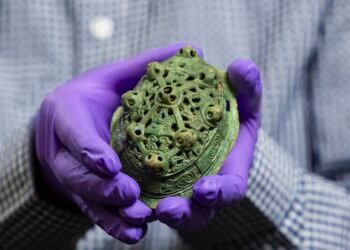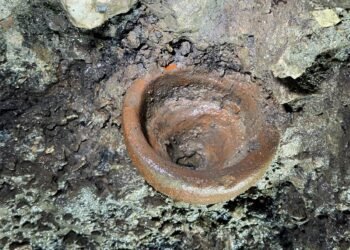A tarnished bronze sword was uncovered from the banks of Budapest’s Danube River in the 1930s.

It was styled like a Bronze Age Hungarian weapon, but it was assumed to be a replica made in the Medieval or later periods.
For over a century, the sword has been on display at Chicago’s Field Museum with the label “merely a replica.”
However, a recent examination of the sword revealed that it is authentic and dates back to the Bronze Age, approximately 3,000 years ago.
In a statement, the Field Museum said that while preparing for “First Kings of Europe,” a special exhibition opening in March 2023, Hungarian archaeologists working alongside Field Museum scientists asked to see the “replica” sword that had been retrieved from the Danube River in Budapest, Hungary, in the 1930s, where it may have been placed in an ancient ritual 3,000 years ago to commemorate lost loved ones or a battle.
The archaeologists scanned the weapon with the help of Field scientists, including a chemist, using an X-ray fluorescence detector, an instrument that looks like a ray gun.
When they compared the sword’s chemical makeup to that of other known Bronze Age swords in Europe, their contents of bronze, copper, and tin were nearly identical.”
It was a tradition for Bronze Age warriors to toss their swords and armor into a body of water “to commemorate lost loved ones or a battle,” according to the statement.
Bill Parkinson, an anthropological curator at the Field who worked on the upcoming First Kings of Europe exhibition, said the results surprised him. “Usually this story goes the other way round,” he said. “What we think is an original turns out to be a fake.”
The newly-authenticated sword will be exhibited in the Field Museum’s main hall as a preview for the new exhibition, according to the museum.






















